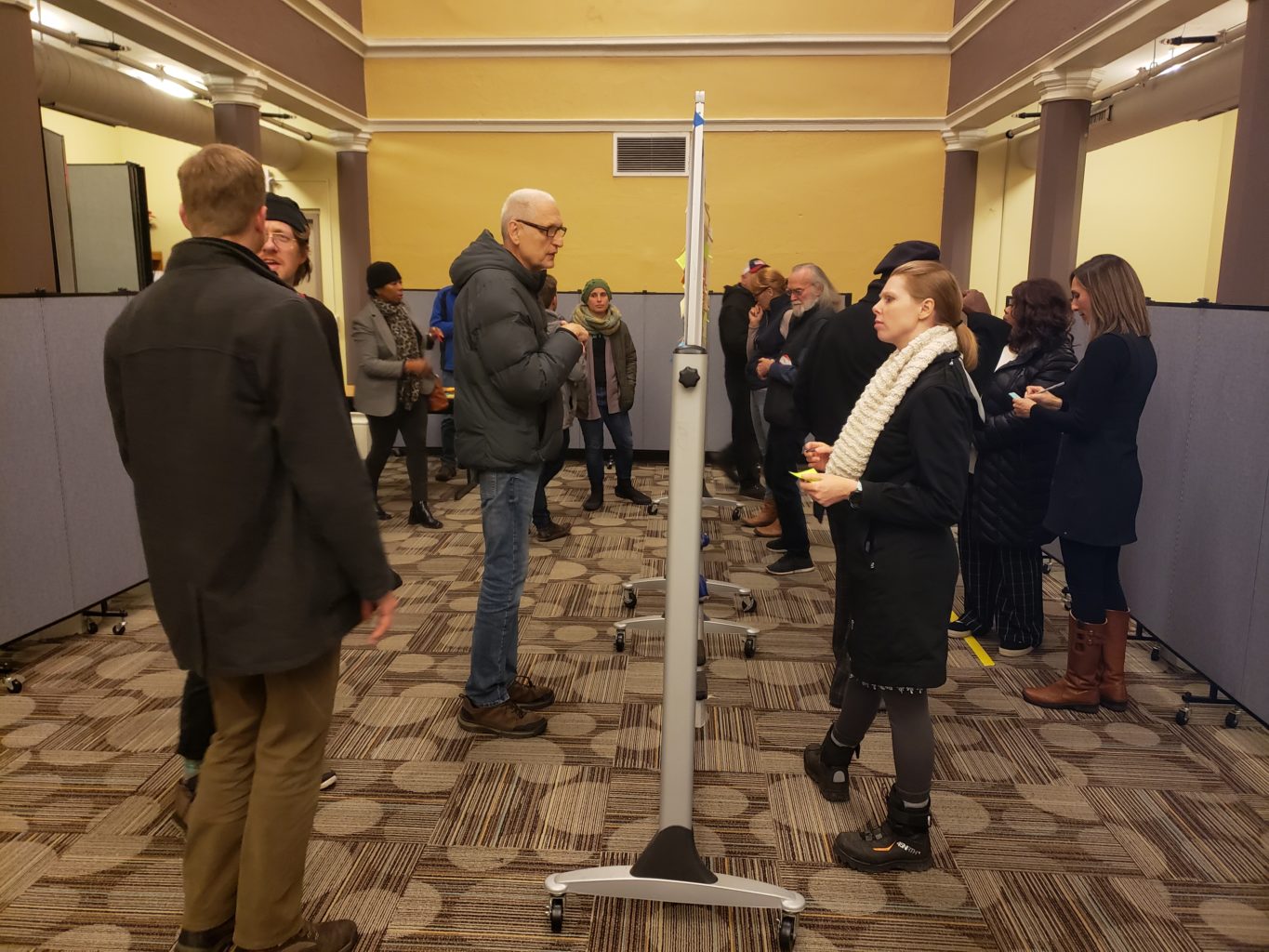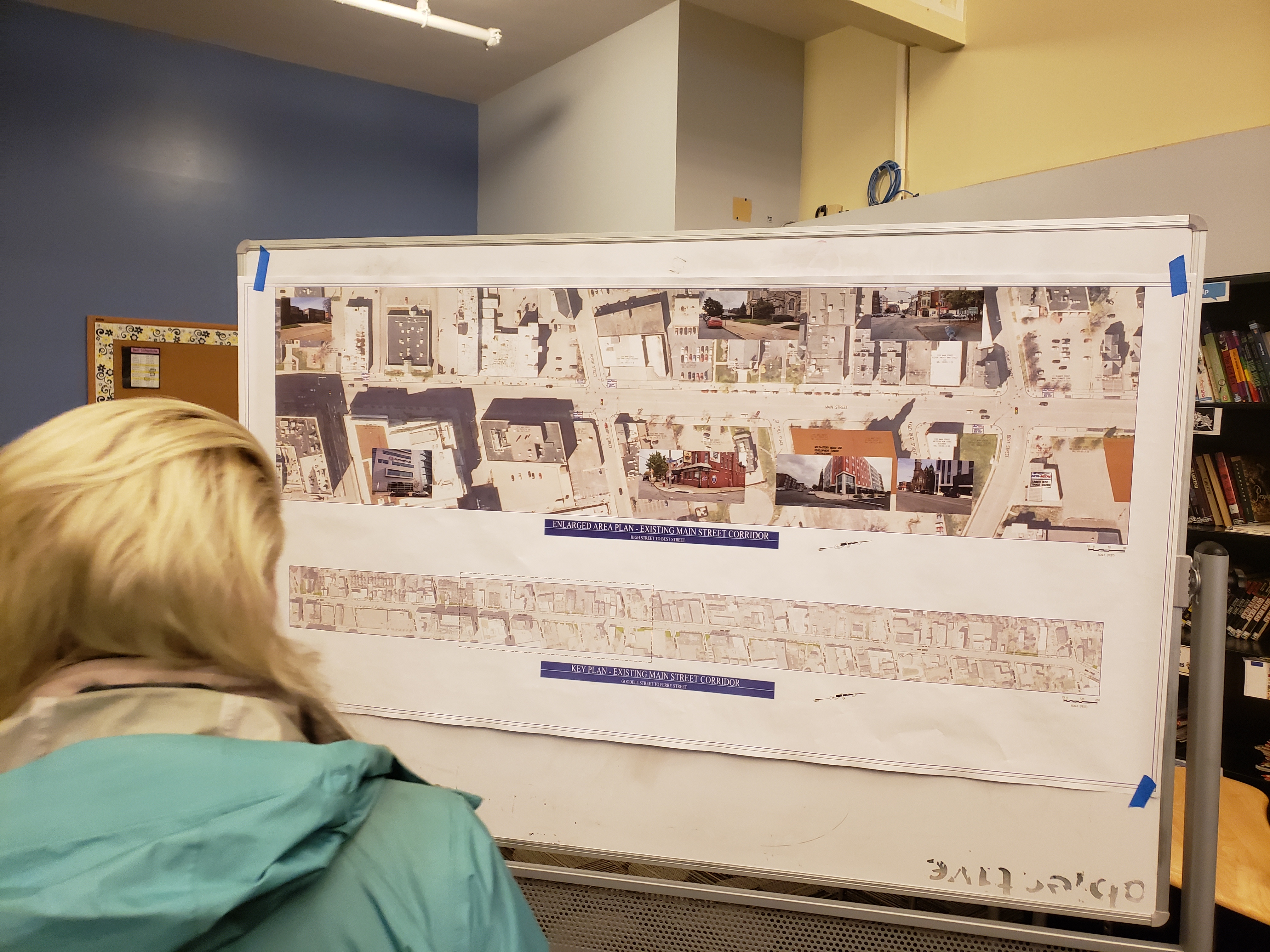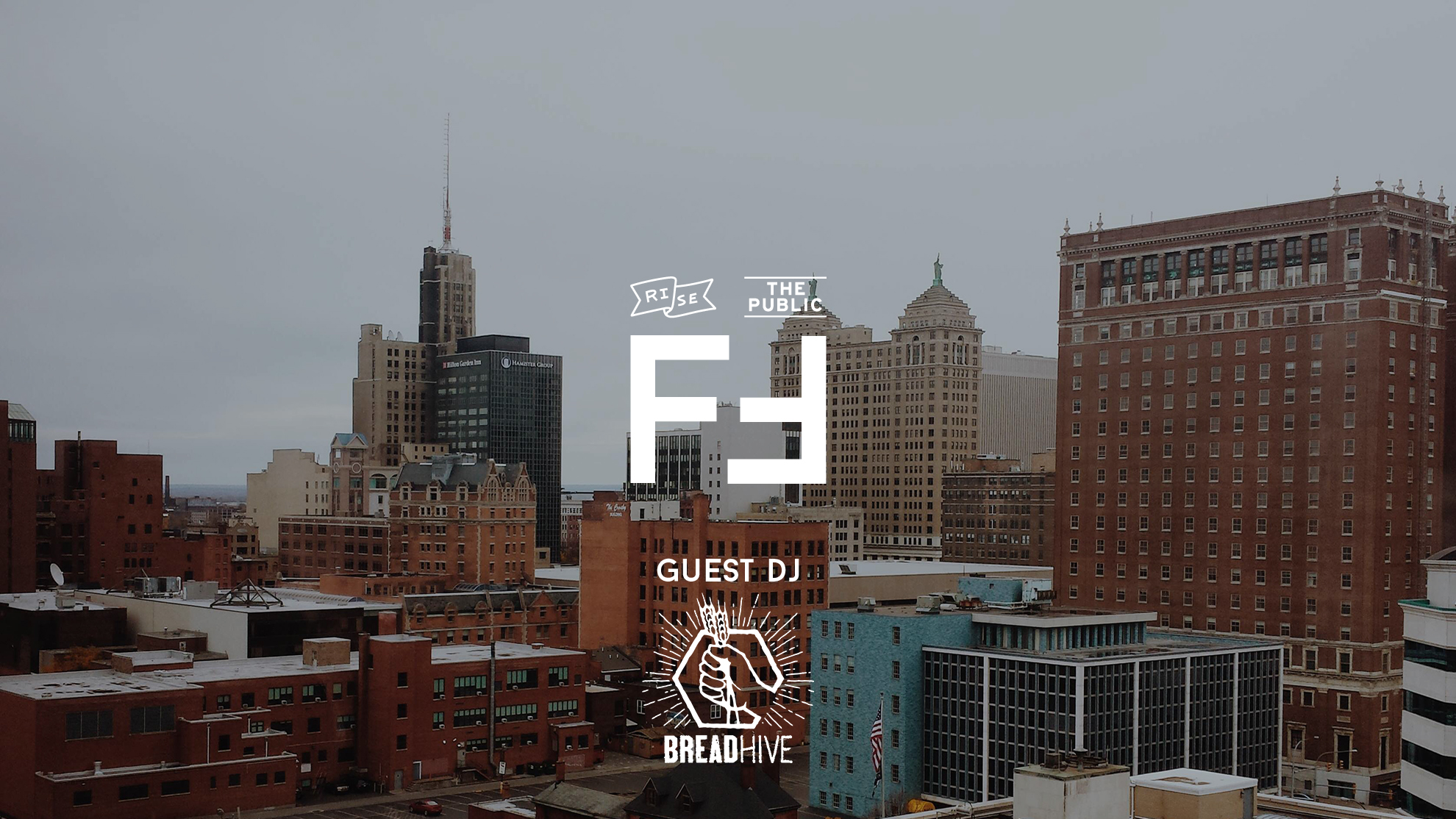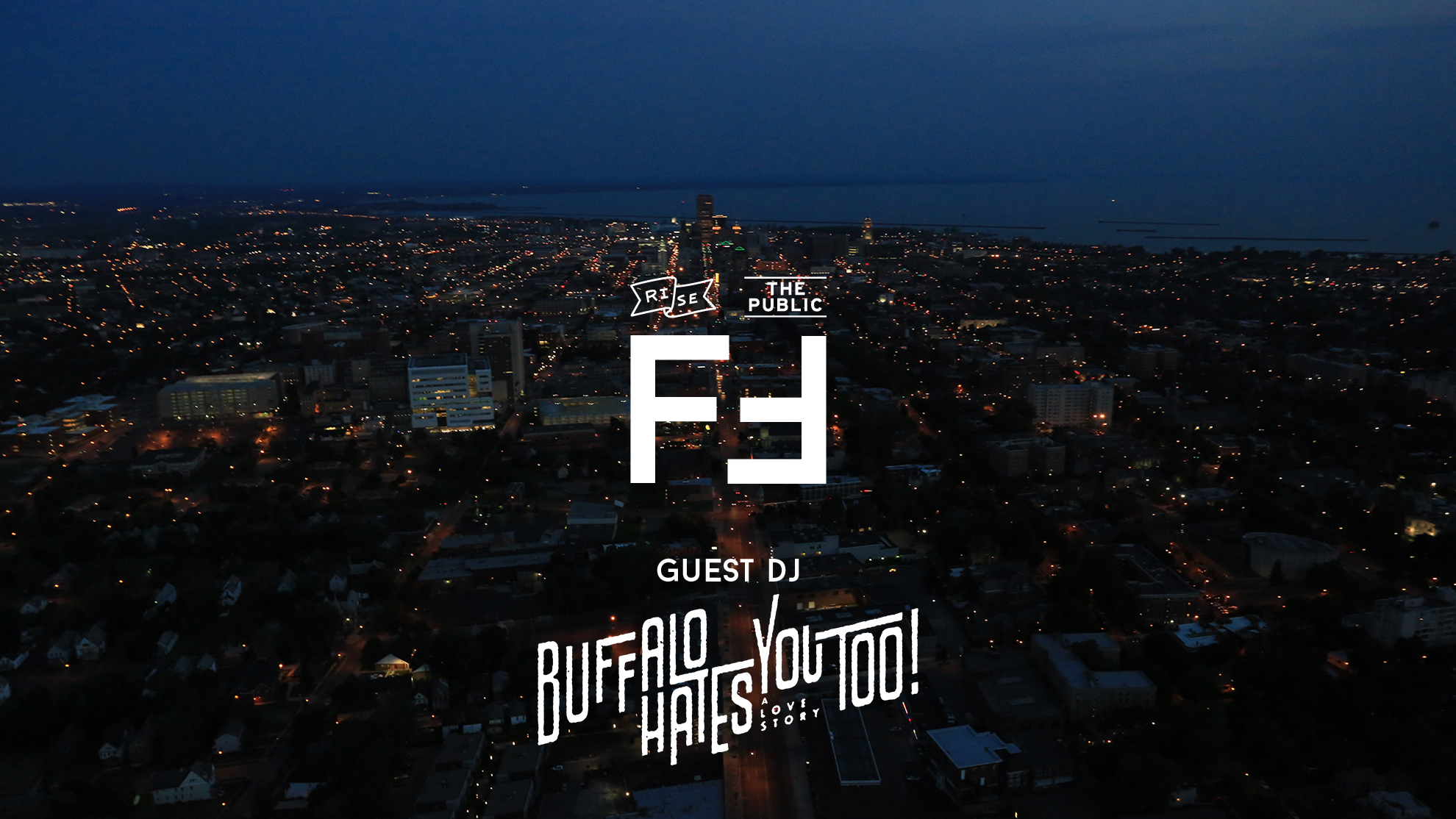At 5PM on Thursday November 7 at Health Science Charter School (Ellicott and Riley), about 100 members of the public gathered to tell the city of Buffalo’s Department of Public Works, and the designers from DiDonao Associates, the civil engineering firm hired to develop the design plans for the street’s transformation, their thoughts on what should become of Main Street from Goodell to Ferry. The stretch has been dubbed “Middle Main” for the purposes of the initial public hearings etc, but it’s a name that might just stick to an area of the city never really referred to as a collective neighborhood, despite the businesses and residents surrounding it.
We are still in fiscal trouble as a city. A lot of the funds needed to overhaul Niagara and Main and others are only awarded by state agencies when they’re in such terrible shape that it becomes a necessity, not just something that would be nice. Knowing that these kinds of funds only arrive once in a generation or less, the public wants to know how they’ll be spent, and what improvements we can see aside from pothole repair.
While some tired old politicians like Joel Giambra cling to the past and seek their name in headlines by rallying for higher speed limits on the 198 to make suburban commuters a whopping 2 minutes and 34 seconds happier, the rest of the nation is moving forward tearing down urban highways, making biking and walking safer, and putting advantages in place to incentivize use of public transit. Buffalo is in limbo. We’re a great example of how to keep doing things the same as we always have in order to stay broke and do everything we can to line the pockets of our largest real estate developers, but every once in a while we plan and operate like its the 21st century and that the city’s residents take priority over luxury lofts.
Commissioner Finn mulls breaking a promise.
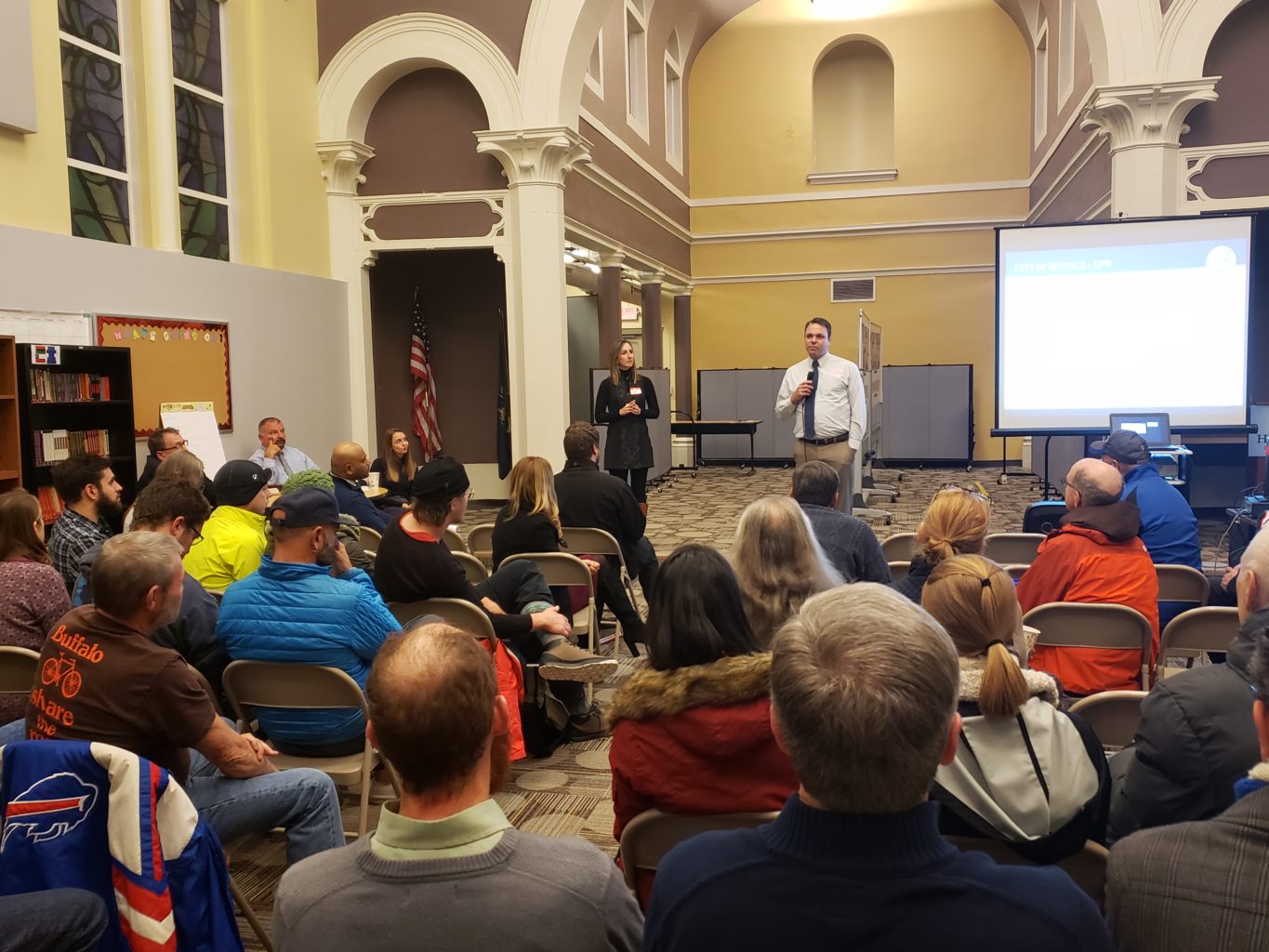
An excellent example of forward thinking is the 2016 Buffalo Bicycle Master Plan, an effort led by the City of Buffalo Department of Public Works and signed and sealed by Mayor Byron Brown, outlined protected bicycle lanes for Main Street. For all the mistakes we make in handing out tax breaks to the wrong projects, and putting highways through parks and neighborhoods, the Bike Master Plan was this thing to keep in our pocket as something modern that the city was doing.
That’s why the community was shocked when in August, Commissioner of Public Works, Mike Finn, stated in an interview with WGRZ :
“I don’t want to guarantee bike lanes because we’ll be working with the community to determine which level of bike facilities they feel is most appropriate for that section.”
This could be us, but we want to park within five feet of wherever we go.
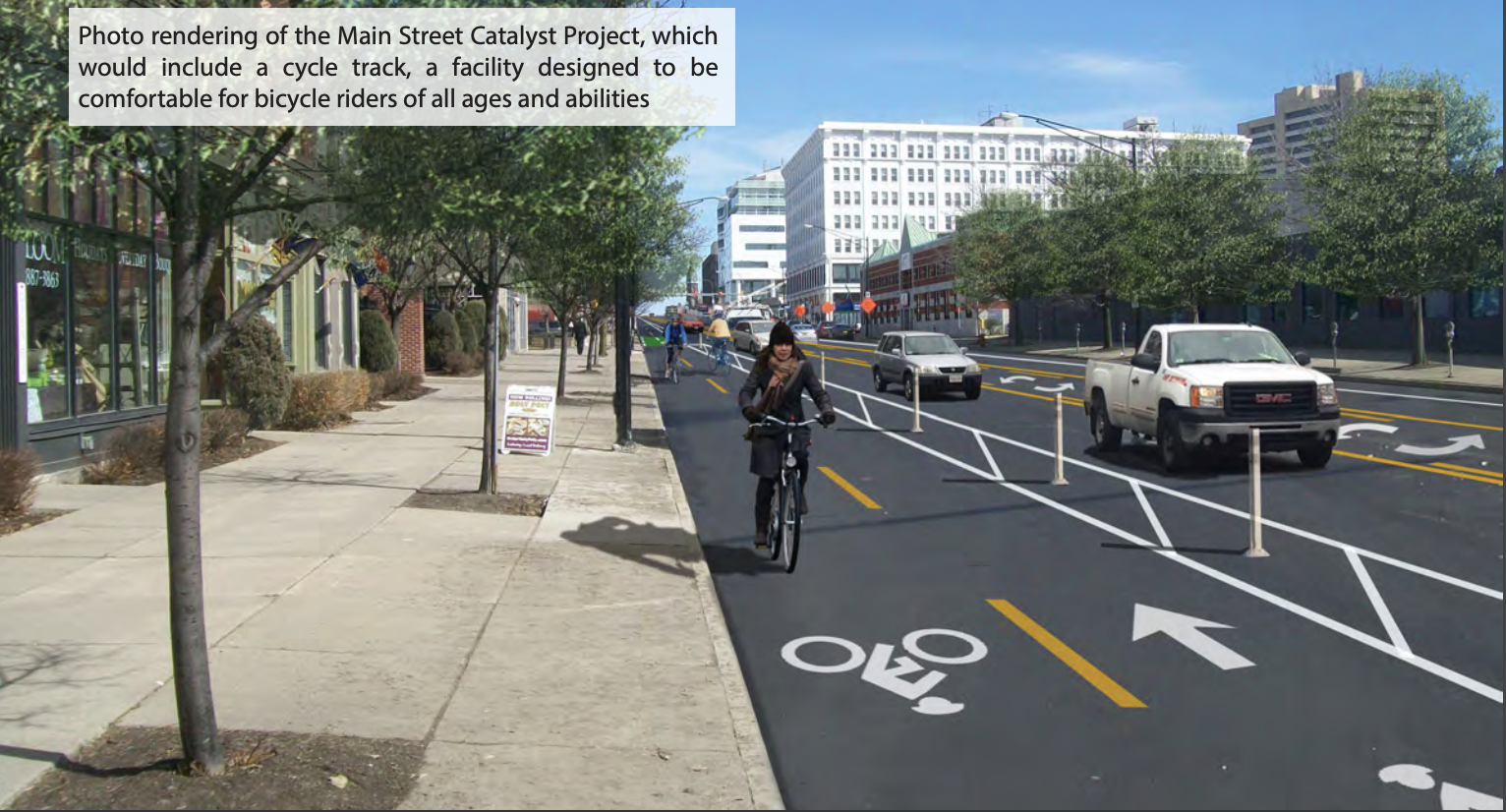
WGRZ and Rod Watson with the Buffalo News spent copious amounts of time covering the bike lanes installed on Delaware between Niagara Square and North St. To go from two lanes to one with bike lanes on both sides was unthinkable. Drivers were livid and traffic was backed up. But the cameras and keyboard went away two weeks later with the congestion disappeared. Water finds the easiest route, and so do drivers. They rerouted to Niagara, Elmwood, Franklin, Pearl, Main, Washington, Ellicott and more. Traffic now moves smoothly on those streets as well as Delaware during rush hour and for the rest of the day, and bikers have a safer path to their work and home. Businesses on Delaware are doing just fine.
It’s difficult to hear the same disproven arguments over Main Street now too. While medical schools and hospitals were under construction for six years, we all endured, knowing we’d have a beautiful, multimodal, complete street coming when the cranes and fences were gone. When Finn reneged on a promise the city made to its residents, it prompted Go Bike Buffalo, Slow Roll Buffalo, Rise and others to sound the alarm and encourage attendance at this meeting to remind the city’s engineers that cars and parking should not dominate the city’s plans as car ownership declines, the majority of the city’s population ages, and proof is in every direction that pedestrian-, not car-friendly neighborhoods increase wealth in cities.
The initial presentation did not have much to say other than that the road is falling apart, we only have enough money to complete an overhaul (including pipes, sewers etc) from Goodell to Ferry at this time, Ferry to Delavan will likely remain a speedway, and we don’t know what we want to do with the lanes, grades, sidewalks or intersections.
Everyone in attendance was invited to put Post-it’s up on multiple stand up maps of the street with things they’d like to see in place, and changes that could make Main Street more inviting. Every other Post-it said “Protected Bike Lanes” but here are some other ideas presented and later discussed:
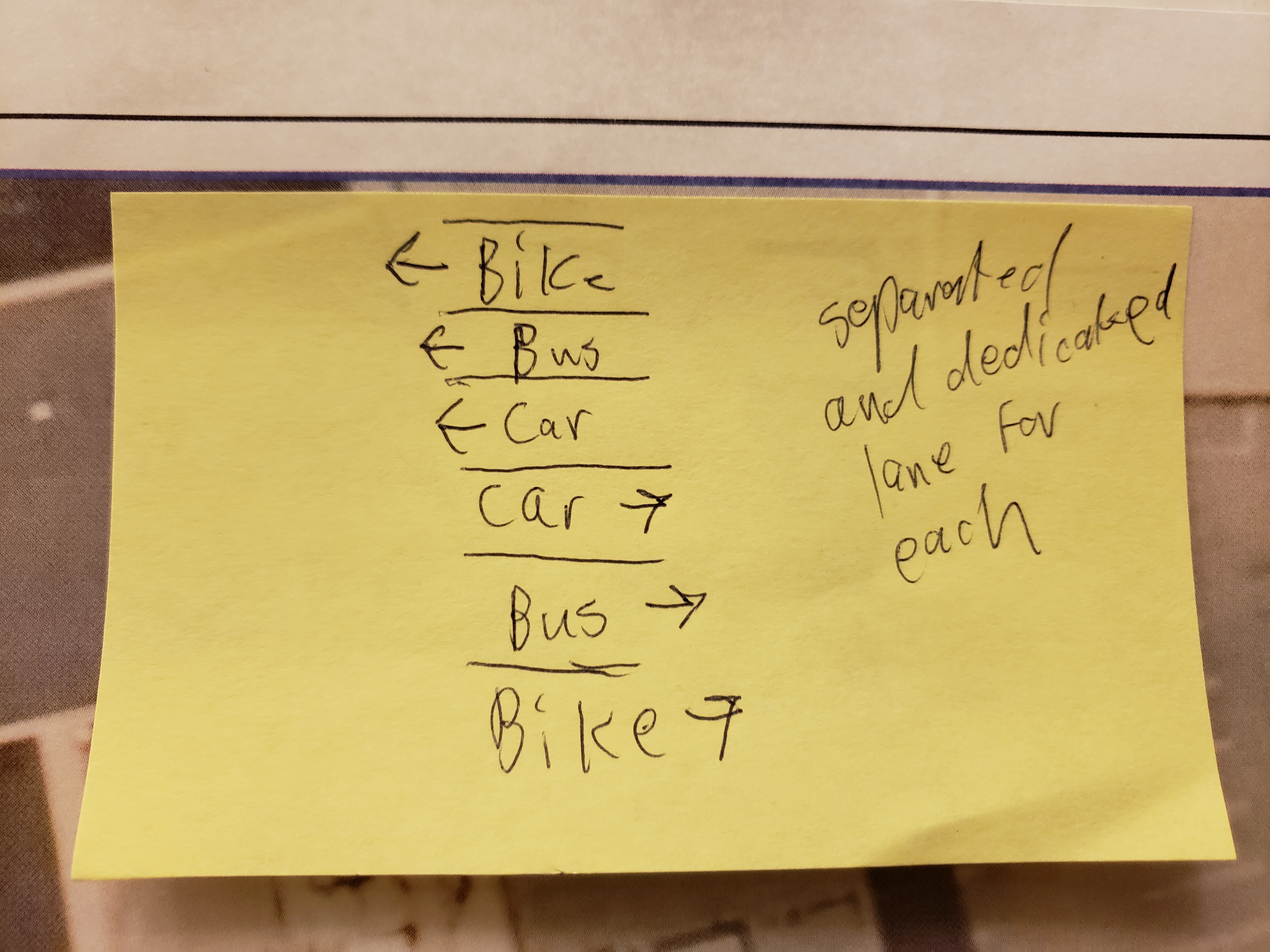
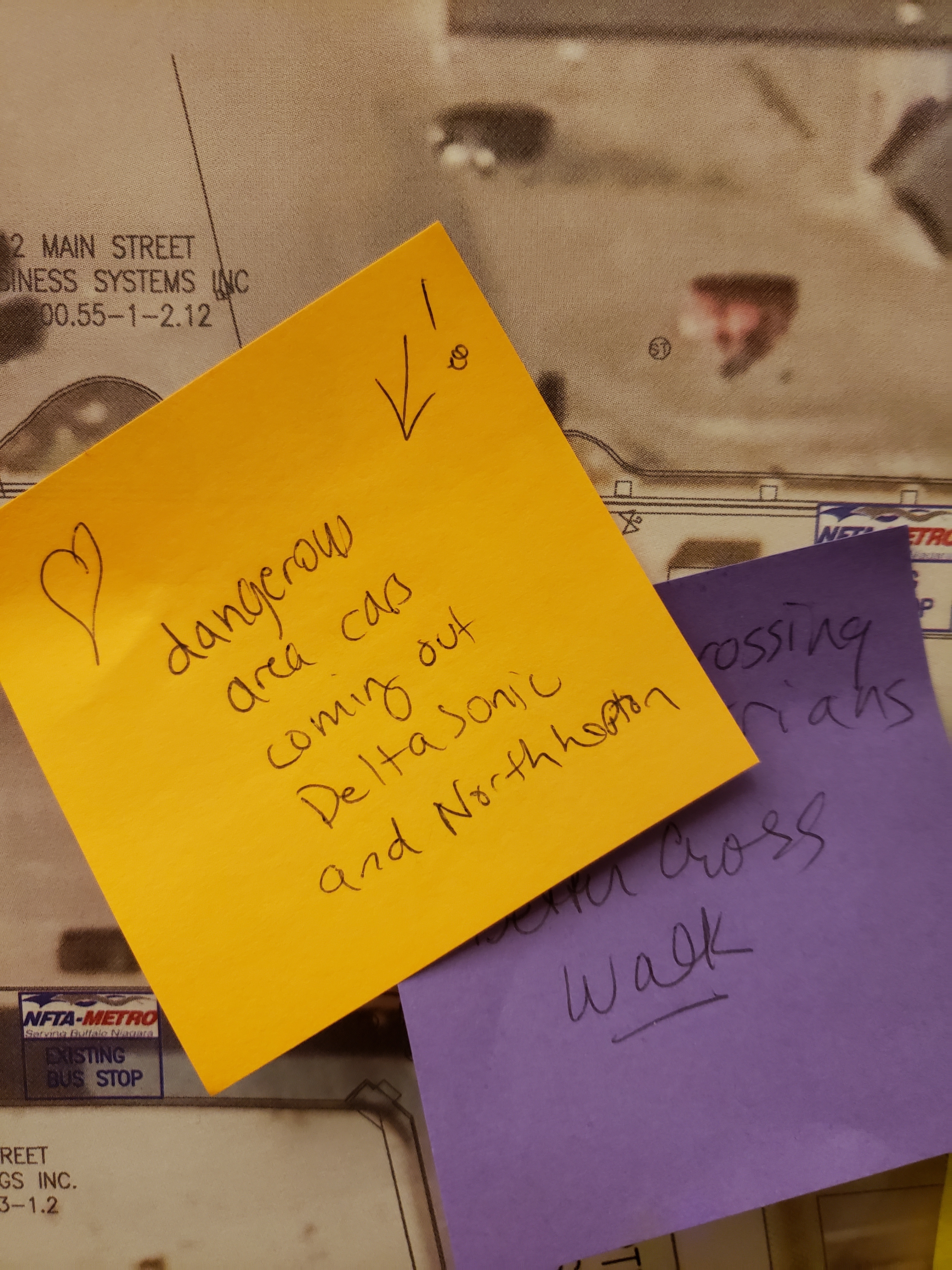
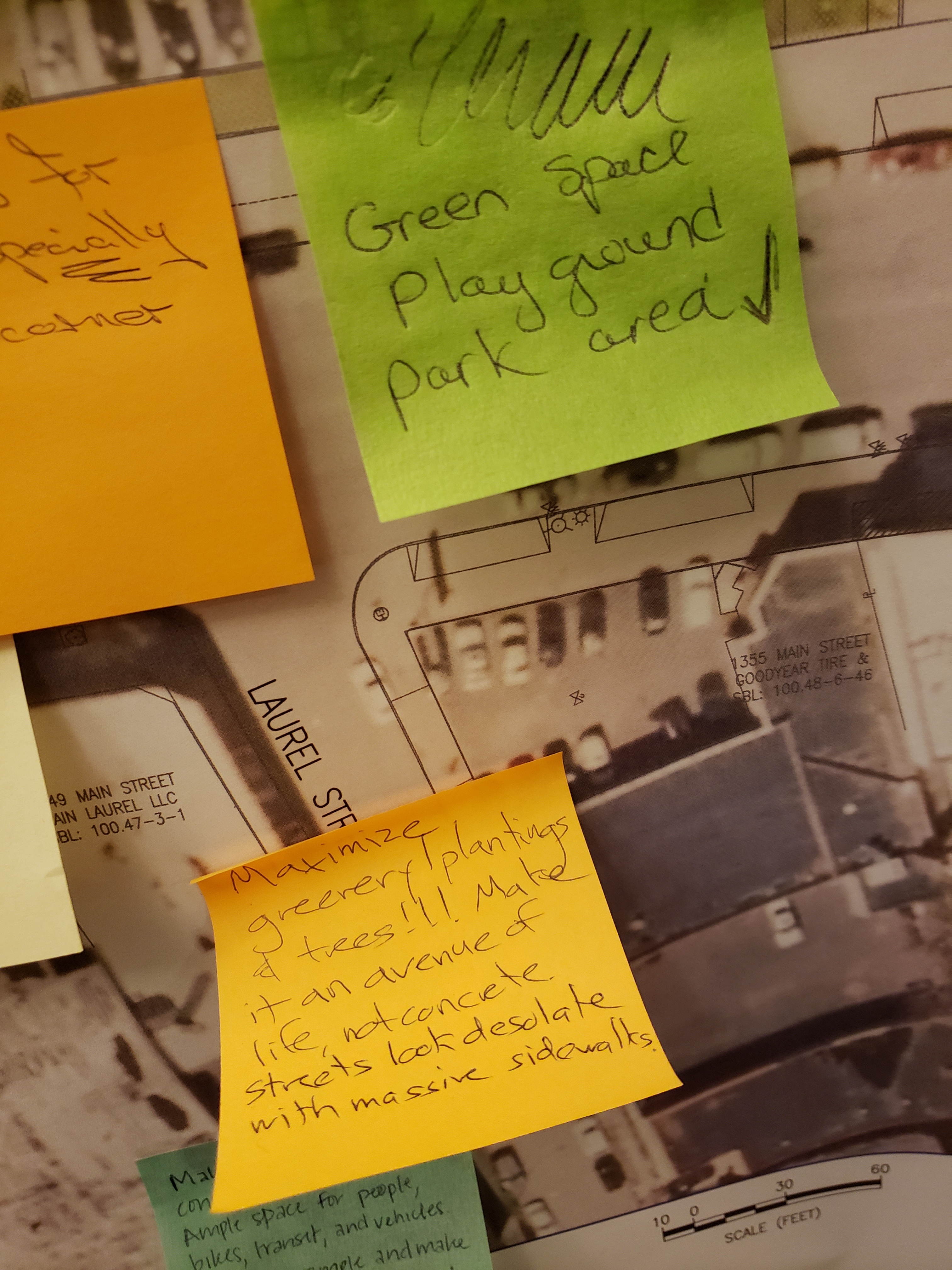
Admittedly, concerned citizens don’t always know all there is to know about what’s affordable, what’s feasible, and who makes the final decisions. But meetings like this can help us find common ground that increases safety.
Of note is that there were very few African Americans in attendance. Neighborhoods east of Main will be equally affected by this project, and DPW has vowed to do a better job of raising awareness by going door-to-door and speaking at community gatherings for near east side residents. There will be more meetings between now and spring when the plan is expected to be completed. You can follow along with Buffalony.gov/middlemain
What was brought up repeatedly is that Main Street is Buffalo’s dividing line of segregation. After redlining by banks and our own government made that line of segregation so strong, our city has organically developed to point outward from Main. We have one subway line essentially in the center of the city, and everything is designed to push people in the other direction. When it comes to the road itself, there are six lanes painted wider than necessary, encouraging drivers to go about 45mph with ease.
Since there is no actual plan up for debate yet to comment on, we’ll leave you with some remaining comments shared with the whole room from the residents in attendance:
“We don’t need more parking.”
“Will the loss of car lanes mean congestion and therefor pollution for neighbors?”
“We should synchronize the lights to encourage cars to go 30mph.”
“We should synchronize the lights to accommodate the 15mph of bikers to encourage biking over driving.”
“Do a grade change for bikers.”
“Main is unwelcoming because no business has any patio or planters. The city should use whatever tools it has to pressure property owners to find tenants. The current system allows them to benefit financially from remaining empty.”
“Bump outs and well-defined pedestrian crossings will encourage more east/west movement.”
“Busy pedestrian signals like Utica should adopt scramble light periods where all cars stop and all pedestrians can cross in any direction at once.”
“A young woman who moved to Buffalo to be an artist walked out of her building on Main, looked both ways, and a speeding vehicle hit her while she crossed, breaking her pelvis. This street is too wide, too fast, and has no regard for pedestrians.”
